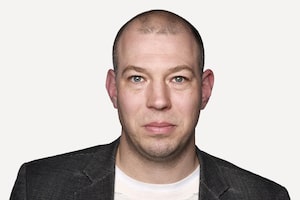
In Minneapolis, where protests first ignited after the May 25 slaying of George Floyd, CNN reporter Omar Jimenez, seen here on May 29, 2020, and his crew were arrested and handcuffed by state police while filming a segment in the middle of a near empty street.CNN/The New York Times News Service
The protests against police brutality erupting across the United States have taken a serious toll on press freedom, with one organization alleging as many as 68 incidents of journalists being arrested, assaulted or having their equipment damaged while covering the chaos.
The Committee to Protect Journalists, a non-profit based in New York, called out the targeting of members of the media, saying in a statement that such acts are an “unacceptable attempt to intimidate them.”
The attacks have been widespread, impacting every type of journalist: photographers, reporters, television personalities and videographers. Some of them work for major networks such as Fox, NBC and CNN, others for newspapers such as the Los Angeles Times. Many are freelancers, trying to cover the protests without the protection of a major corporation.
In Minneapolis, where protests first ignited after the May 25 slaying of George Floyd, CNN reporter Omar Jimenez and his crew were arrested and handcuffed by state police while filming a segment in the middle of a near empty street. The Governor of Minnesota apologized for the arrest of the journalists.
The same day, May 29, Linda Tirado, a freelance photographer, was struck in the face by a projectile that appeared to have been fired by Minneapolis police, leaving her, she says, with no vision in her left eye.
In Los Angeles on Saturday, Canadian freelance photographer Barbara Davidson said she was shoved by an LAPD officer after repeatedly telling him that she was a member of the press. Her head struck a fire hydrant, but fortunately she was wearing a skateboard helmet.
“He literally lifted me off my feet,” she told The Globe and Mail in an interview. “That’s a whole level of aggression that I’ve never experienced before.” Ms. Davidson said that she believes she would have been trampled by riot police had protesters not pulled her from the ground to safety.
In Louisville, Ky., local broadcast journalist Kaitlin Rust and videographer James Dobson captured, on camera, a police officer pointing his pepper-ball gun directly at them and firing repeatedly from a few feet away.
“I’m getting shot!” Ms. Rust yelled as she was struck by the pepper bullets, which release pepper spray. The Louisville police department apologized if Ms. Rust was singled out for being a reporter.
The violence toward reporters was also dispensed by civilians. Briana Whitney, a CBS-affiliated television reporter in Phoenix, was describing a protest scene to viewers, when a man yelled a vulgarity at her and tried to tackle her, nearly knocking her over. Meanwhile, in Atlanta on Friday, throngs of protesters broke windows and spray painted the CNN logo outside the network’s headquarters.
Although statistics about such incidents are difficult to pinpoint, the U.S. Press Freedom Tracker – a joint project launched by two press advocacy organizations – said in a Tweet Sunday that it was “working to verify and document at least 68 instances” of these sorts of acts.
Other press-freedom advocates drew a direct line to President Donald Trump’s rhetoric and his repeated efforts to paint the media as villainous. On Sunday, Mr. Trump fanned those flames, tweeting: “The Lamestream Media is doing everything within their power to foment hatred and anarchy. As long as everybody understands what they are doing, that they are FAKE NEWS and truly bad people with a sick agenda, we can easily work through them to GREATNESS!”
David Kaye, a law professor and the United Nations Special Rapporteur on the promotion and protection of the right to free expression, cited the “incessant attacks by Trump on the press” as part of the reason why so many journalists were finding themselves in harm’s way.
“The attacks on journalists are appalling and must be condemned and perpetrators held accountable,” Mr. Kaye wrote in a tweet.
Ryder Gilliland, a Toronto lawyer and press-freedom advocate, said that the many confrontations unfolding at the protests show the need for them to be documented by the media – to make it clear who the instigators are when things go awry.
“As we are seeing, when there are elements of police misconduct, protester violence and confusion and misinformation respecting what civilian groups are responsible for property damage and the like, it is particularly important to have eyes as close to the events as possible. Violence impedes the search for truth,” said Mr. Gilliland, the immediate past president of the Canadian Media Lawyers’ Association.
“I don’t recall ever seeing news media being targeted this way on this scale in the United States and would certainly hope that we would never see it here."
With reports from Reuters
Our Morning Update and Evening Update newsletters are written by Globe editors, giving you a concise summary of the day’s most important headlines. Sign up today.
 Greg McArthur
Greg McArthur